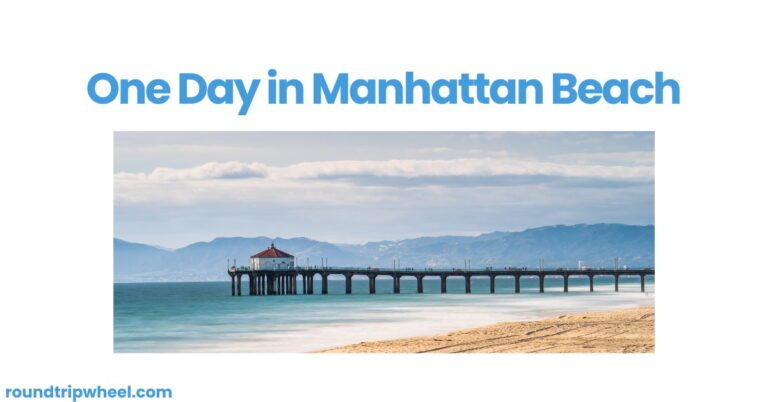The Best and Worst Times to Visit West Virginia

West Virginia, a hidden gem nestled in the heart of the Appalachian Mountains, is a destination that captivates visitors with its breathtaking natural beauty, rich cultural heritage, and an array of outdoor adventures. From the towering peaks and rushing rivers to the historic towns and charming communities, this state offers something for every traveler. However, timing your visit can make a significant difference in your overall experience. In this article, we’ll explore the best and worst times to visit West Virginia, taking into account the weather, popular events, and seasonal attractions.
The Best Times to Visit West Virginia
Spring (Late April to May)
Spring is an enchanting time to visit West Virginia, as the state awakens from its winter slumber with a vibrant display of wildflowers. The hiking trails in the state’s numerous parks and forests, such as the Blackwater River Trail in Canaan Valley Resort State Park and the Stone Cliff Trail in New River Gorge National Park and Preserve, come alive with yellow trout lilies, purple larkspurs, and a myriad of other blooms.
This season also marks the arrival of the beloved ramps, a wild onion that is a staple in Appalachian cuisine. Foodies can indulge in ramp-infused dishes at local restaurants or attend the Ramps and Rail Festival in Elkins, where ramps take center stage alongside live music and local crafts.
Late Spring and Early Summer (May to June)
As the weather warms up, West Virginia transforms into an outdoor enthusiast’s paradise. The state’s rivers, including the Lower Gauley and Cheat Rivers, offer exhilarating white-water rafting experiences, while the Shenandoah and Potomac Rivers provide serene tubing adventures.
For waterfall chasers, the West Virginia Waterfall Trail is a must-visit, showcasing cascades in places like Babcock State Park and Monongahela National Forest. Additionally, July brings the Sternwheel Regatta in Charleston, featuring boat races along the Kanawha River, and the Contemporary American Theater Festival in Shepherdstown, showcasing new plays and performances.
Fall (September to October)
Autumn in West Virginia is a spectacle like no other. The state’s rolling hills and valleys become a kaleidoscope of vibrant reds, oranges, and yellows, creating a breathtaking backdrop for scenic drives, hiking trails, and train rides aboard the Potomac Eagle or the New Tygart Flyer.
Adventure seekers can participate in the legendary Gauley Season, where 25 miles of the Gauley River open up for white-water rafting through its thrilling rapids. Additionally, the Bridge Day festival in Fayetteville offers a unique experience, as daring BASE jumpers hurl themselves off the iconic New River Gorge Bridge.
The Worst Times to Visit West Virginia
Winter (December to March)
While West Virginia’s winters can be magical, with snow-capped peaks and cozy cabins, this season can also present challenges for travelers. The state’s mountainous terrain and high elevations (with over 40 peaks exceeding 4,000 feet) can lead to treacherous driving conditions and potential road closures due to heavy snowfall.
However, for those seeking winter adventures, the eastern part of the state offers opportunities for skiing, snowboarding, and sledding at resorts like Timberline Mountain and Canaan Valley Ski Resort. Blackwater Falls State Park also provides a family-friendly sled run and cozy cabins with wood-burning fireplaces.
Summer (July to August)
While summer is a popular time for outdoor enthusiasts, it can also be a challenging season for visitors to West Virginia. The state’s average highs during these months can reach the upper 80s, making outdoor activities uncomfortable for some.
Additionally, the humidity levels can be high, particularly in the valleys and lower elevations. However, if you can handle the heat and humidity, summer offers ample opportunities for hiking, camping, and exploring the state’s natural wonders.
Factors to Consider When Planning Your Visit
Weather and Seasonal Attractions
West Virginia’s climate can vary greatly depending on the region and elevation. The mountains in the eastern part of the state tend to be cooler and receive more snowfall during the winter months, while the western regions experience milder temperatures and less precipitation.
It’s essential to consider the seasonal attractions and activities that interest you most when planning your visit. If you’re an avid hiker or outdoor enthusiast, the spring and fall seasons may be ideal, offering comfortable temperatures and stunning scenery. If you’re seeking winter adventures, the eastern part of the state is your best bet, with its ski resorts and snow-covered landscapes.
Local Events and Festivals
West Virginia is home to a vibrant calendar of local events and festivals, many of which are deeply rooted in the state’s rich cultural heritage. From the Ramps and Rail Festival in Elkins to the Bridge Day festival in Fayetteville, these events offer unique experiences and insights into the local traditions and way of life.
If you plan to attend one of these events, be sure to book your accommodations well in advance, as they tend to draw large crowds and fill up quickly.
Accessibility and Road Conditions
West Virginia’s mountainous terrain can pose challenges for travelers, particularly during the winter months when heavy snowfall and icy conditions can make some roads impassable. It’s essential to plan your route carefully, carry emergency supplies, and consider investing in all-wheel or four-wheel drive vehicles if you plan to venture into remote areas.
Additionally, some attractions and hiking trails may be closed or have limited accessibility during certain seasons due to weather conditions or maintenance.
Accommodations and Crowds
Like many destinations, West Virginia experiences peak tourist seasons and periods of lower visitation. If you prefer a more serene and less crowded experience, consider visiting during the shoulder seasons of spring and fall, when the weather is mild and the crowds are smaller.
However, if you don’t mind the hustle and bustle, summer and winter can be excellent times to visit, as many resorts and attractions offer extended hours and additional amenities to accommodate the influx of visitors.
Embracing the Unique Charm of West Virginia
Regardless of when you choose to visit West Virginia, this state promises to enchant you with its natural beauty, rich cultural heritage, and warm hospitality. From the rugged mountains and rushing rivers to the charming towns and welcoming communities, West Virginia offers a unique and authentic experience that will leave a lasting impression.
So, whether you’re seeking outdoor adventures, cultural immersion, or simply a peaceful escape from the hustle and bustle of daily life, West Virginia has something to offer in every season. By carefully considering the factors outlined in this article, you can plan the perfect visit and create unforgettable memories in this hidden gem of the Appalachian Mountains.

About Author
Hey there, fellow explorers! I’m Mark Rodriguez, a big fan of adventures and always hungry for more. Packed with stories and a trusty camera, I’m on a mission to explore cool places around the world.
I love diving into new cultures and landscapes. As a travel writer, my goal is to get you excited about stepping out of your comfort zone, trying new things, and discovering the awesome magic our world has.
Check out my blog for cool stories, travel ideas, and helpful tips to plan your own amazing getaway!





